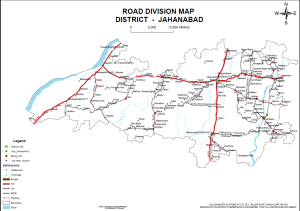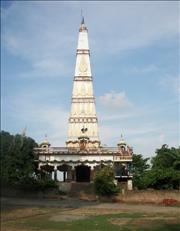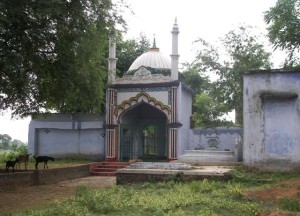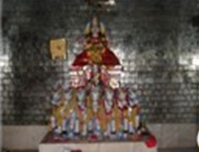Arwal district was earlier a part of the Jehanabad district and it came into existence in September 2001. This is the thirty-eight District of Bihar.Arwal is situated 60 km south of 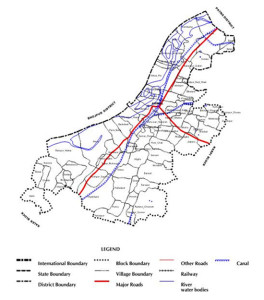 Patna. Arwal town is situated on the right side bank of the river Son.
Patna. Arwal town is situated on the right side bank of the river Son.
How To Reach
BY Air (Airport):-The nearest airport is at Patna
By Rail:-The nearest railway station is located at Jehanabad
By Road :- (a) NH-110 Arwal to Jehanabad
(b) NH-98 Arwal-Aurangabad-Patna.
Popular tourist destinations
ARWAL BLOCK
Madhusurva Temple :-
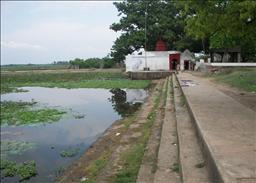
It is most important place for arwal because of its nearness to the city centre.
Sun Temple (Arwal) :-
Baidrabad :-
It is about 40 km west of Jahanabad on the left bank of river son approvable by NH98. An early historical site was located by ASI yielded sherbs of the N.B.P ware along with grey black slipped, black-and-red and red wares . The most important discovery from the site is a stone sculpture of a standing eight-armed dancing Ganese belonging to the Pal period.
Radha Baba Temple (Fakharpur) :-
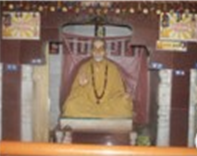
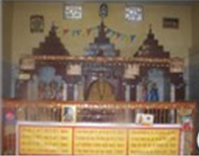 A great saint Sri Radha Baba birth place is in Village Fakharpur Arwal. Radha baba spent his most of the life in Geeta Vatika , Geeta Press Gorakhpur. He was a great scholar, freedom fighter and a true saint who attained a great spiritual height. Maha Bhakti Bhav with Radha Krishna was practised by him in his life. His samadhi is situated in Geeta Vatika, Gorakhpur and a temple in the name of Radha Baba is also situated in Fakharpur Village.
A great saint Sri Radha Baba birth place is in Village Fakharpur Arwal. Radha baba spent his most of the life in Geeta Vatika , Geeta Press Gorakhpur. He was a great scholar, freedom fighter and a true saint who attained a great spiritual height. Maha Bhakti Bhav with Radha Krishna was practised by him in his life. His samadhi is situated in Geeta Vatika, Gorakhpur and a temple in the name of Radha Baba is also situated in Fakharpur Village.
Janakpur:- The KP Jayaswal Research Institute, during in the course of its Archaeological Explorations brought to light the site period Early medieval. Janakpur Dham:- The KP Jayaswal Research Institute, during in the course of its Archaeological Explorations brought to light the site period Early medieval.
Makhdum shah ka Mazar:-
Makhdum Shah ka Mazaar is considered to be a historic location because of its historical prominence. Tourists and locals flock to this mazaar which is a mausoleum of a Sufi saint by the name of Hazrat Makhdum Shah Kazin to seek divine blessings
Khanqah Shamsia:-
KURTHA BLOCK
Ghejan:- About 25 Kms south-west of Jehanabad Ghejan is known for a number of ancient Buddhist and Brahmanical statues. The most interesting of them being a large seated diadem. There was also a large statue of Avalokitesvara with an inscription on the pedestal stating that it was the gift of Sthavira Ratn, who came from Nalanda and dedicated it for the benefit of his two disciples. This piece of Buddhist sculpture has since being shifted to the Patna Museum.
According to legend, Buddha is said to have stayed in the village for a few days while on way to Gaya to attain enlightenment. He had also delivered sermons to a select group of disciples in the village. Later Bimbisar, emperor of Magadh set up a monastery in the village to commemorate Buddha’s visit. The ruins of an ancient brick temple also exist in the village and there is also a temple containing a large standing figure of Tara, now worshiped as Bhagwati.
Kurtha:-
The KP Jayaswal Research Institute, during in the course of its Archaeological Explorations brought to light the site period Medieval.
Sun Temple(Kurtha):-
Sachai:- The KP Jayaswal Research Institute, during in the course of its Archaeological Explorations brought to light the site period Medieval. Nasirana:- The KP Jayaswal Research Institute, during in the course of its Archaeological Explorations brought to light the site period Early medieval. Lari Garh:- The KP Jayaswal Research Institute, during in the course of its Archaeological Explorations brought to light the site period Medieval. Simuara Lari:- The KP Jayaswal Research Institute, during in the course of its Archaeological Explorations brought to light the site period Early medieval. Manikpur:- The KP Jayaswal Research Institute, during in the course of its Archaeological Explorations brought to light the site period Late medieval. Chhatoi Garh:- The KP Jayaswal Research Institute, during in the course of its Archaeological Explorations brought to light the site period Medieval. Benipur:- The KP Jayaswal Research Institute, during in the course of its Archaeological Explorations brought to light the site period Early medieval. Koni:– The KP Jayaswal Research Institute, during in the course of its Archaeological Explorations brought to light the site period Early medieval. Kaitha Lodipur:- The KP Jayaswal Research Institute, during in the course of its Archaeological Explorations brought to light the site period Early medieval. Kodmarai:- The KP Jayaswal Research Institute, during in the course of its Archaeological Explorations brought to light the site period Early medieval. Kamria:– The KP Jayaswal Research Institute, during in the course of its Archaeological Explorations brought to light the site period Early medieval. Nayan Sukh Bigha:- The KP Jayaswal Research Institute, during in the course of its Archaeological Explorations brought to light the site period Late medieval. Chand Bigha:- The KP Jayaswal Research Institute, during in the course of its Archaeological Explorations brought to light the site period Early medieval. Nidhama:- The KP Jayaswal Research Institute, during in the course of its Archaeological Explorations brought to light the site period Early medieval. Alawalpur Garh:- The KP Jayaswal Research Institute, during in the course of its Archaeological Explorations brought to light the site period Early medieval. Niranjan Bigha:- The KP Jayaswal Research Institute, during in the course of its Archaeological Explorations brought to light the site period Early medieval. Ahmadpur Harna Garh:- The KP Jayaswal Research Institute, during in the course of its Archaeological Explorations brought to light the site period Kushan.
KARPI BLOCK
Aiyara Sun Temple:- The site has an ancient Sun Temple and a big Surajkund. The Temple was erected by a local king about 400 year ago.
By ASI in year 63-64, an inscribed stone prasasti , dated in Saka era 1097 (AD 1175 ) and composed by a kayastha poet, Dharesvara, son of Mahesvara, a resident of Magadha was found in this village.
Belkhara Sun Temple :- The place has a Sun Temple And a tank of late Medieval Period.
Koili Ghat:- The KP Jayaswal Research Institute, during in the course of its Archaeological Explorations brought to light the site period Medieval. Samanpur Badopur:- The KP Jayaswal Research Institute, during in the course of its Archaeological Explorations brought to light the site period Early medieval. Badopur:- The KP Jayaswal Research Institute, during in the course of its Archaeological Explorations brought to light the site period Medieval. Puran- The KP Jayaswal Research Institute, during in the course of its Archaeological Explorations brought to light the site period Late NBPW. Dih Karpi:- The KP Jayaswal Research Institute, during in the course of its Archaeological Explorations brought to light the site period Early medieval. Ibrahimpur:– The KP Jayaswal Research Institute, during in the course of its Archaeological Explorations brought to light the site period Early medieval. Nadi Khurd:- The KP Jayaswal Research Institute, during in the course of its Archaeological Explorations brought to light the site period Medieval. Anand Garh:- The KP Jayaswal Research Institute, during in the course of its Archaeological Explorations brought to light the site period Early medieval. Bala garh:- The KP Jayaswal Research Institute, during in the course of its Archaeological Explorations brought to light the site period Late gupta. Kinjar:– The KP Jayaswal Research Institute, during in the course of its Archaeological Explorations brought to light the site period NBPW phase. Kusher Gram:- The KP Jayaswal Research Institute, during in the course of its Archaeological Explorations brought to light the site period Medieval. Panchtirth (Dharnai):- The KP Jayaswal Research Institute, during in the course of its Archaeological Explorations brought to light the site period Early medieval.
Vishnu Temple (Pandit):- It is around 3 kms from Kurtha. The Gangahar river originates here from Punpun river.The leg print of Lord Vishnu is situated in stone cast like in Gaya (Vishnupad Temple). It has also got Five Pandavas statues, Pandav Ghat on Punpun river where Pitra Tarpan was done by Pandavas and Shri Ram as well. It has got a new Sun temple and Devi temple.
SONBHADRA BANSHI SURYAPUR
Khatangi:– The KP Jayaswal Research Institute, during in the course of its Archaeological Explorations brought to light the site period Late Gupta. Bithara:- The KP Jayaswal Research Institute, during in the course of its Archaeological Explorations brought to light the site period Medieval. Pondil:- The KP Jayaswal Research Institute, during in the course of its Archaeological Explorations brought to light the site period Early medieval. Makshiyawan:– The KP Jayaswal Research Institute, during in the course of its Archaeological Explorations brought to light the site period Early medieval. Sherpur:- The KP Jayaswal Research Institute, during in the course of its Archaeological Explorations brought to light the site period Early medieval. Dharmpur:- The KP Jayaswal Research Institute, during in the course of its Archaeological Explorations brought to light the site period Early medieval. Piprotha:- The KP Jayaswal Research Institute, during in the course of its Archaeological Explorations brought to light the site period Medieval.
Banshi:- Banshi has historical importance as the famous Sanskrit Poet Bann Bhatt and the writer of the Biography of King Harshavardhana, the book named “Harsha Charit” was born in this village Banshi Suryapur in Arwal District. It is believed that the poet Banabhatta worshiped Mahadev Mandir which was erected by himself. It is commonly believed that Bann Bhatt used to visit Devkund, which is situated 6 miles south west away from village Banshi. In Devkund there is a lord Shiva temple which is also famous.
According to Jayaswal Research Institute Archaeological Explorations this site belongs to Early medieval period.
Budhwa Mahadev Mandir ( Banshi ):-
Devi Sthan(Banshi):-
Shiva Mandir(Banshi):-
KALER BLOCK
Madsarma:- The KP Jayaswal Research Institute, during in the course of its Archaeological Explorations brought to light the site period Early medieval. Amir Bigha:- The KP Jayaswal Research Institute, during in the course of its Archaeological Explorations brought to light the site period Early medieval. Niranjanpur Garh:- The KP Jayaswal Research Institute, during in the course of its Archaeological Explorations brought to light the site period Gupta
.
